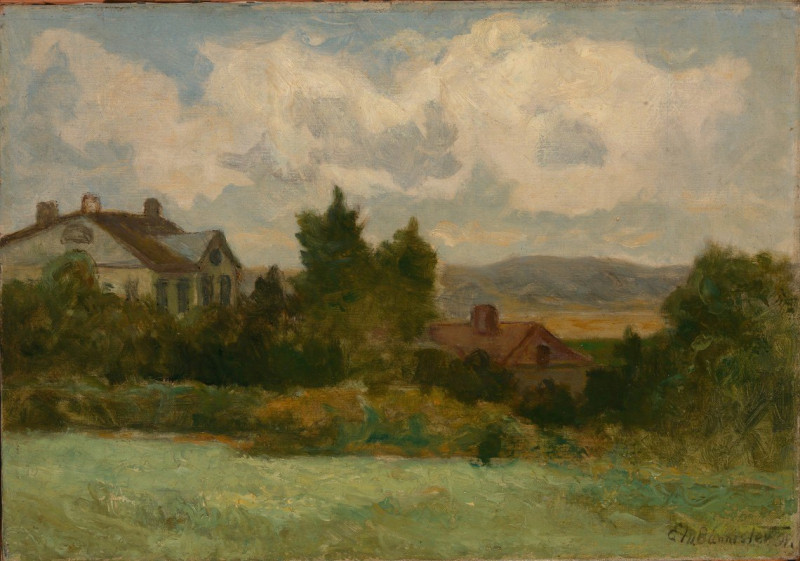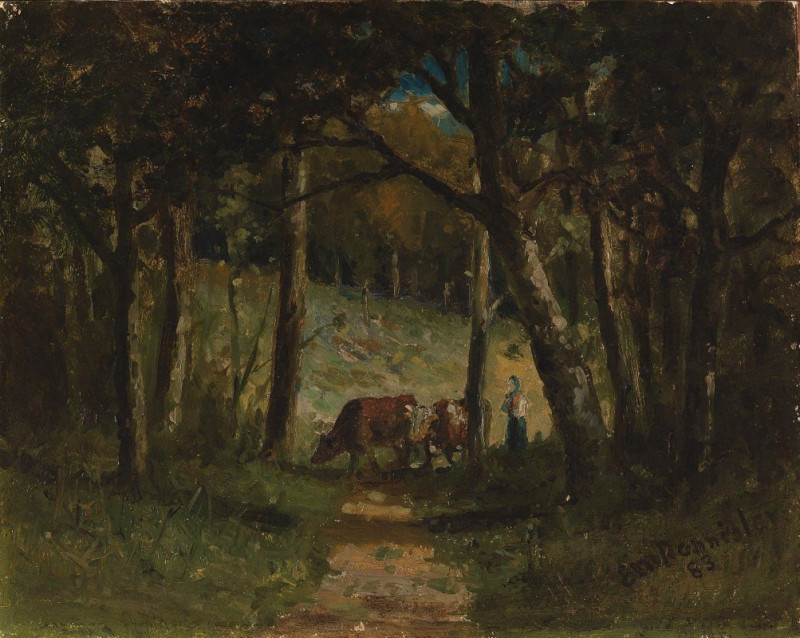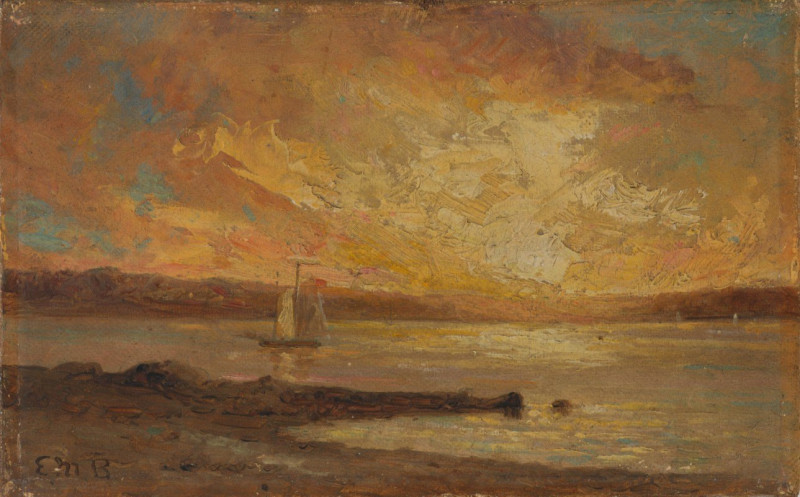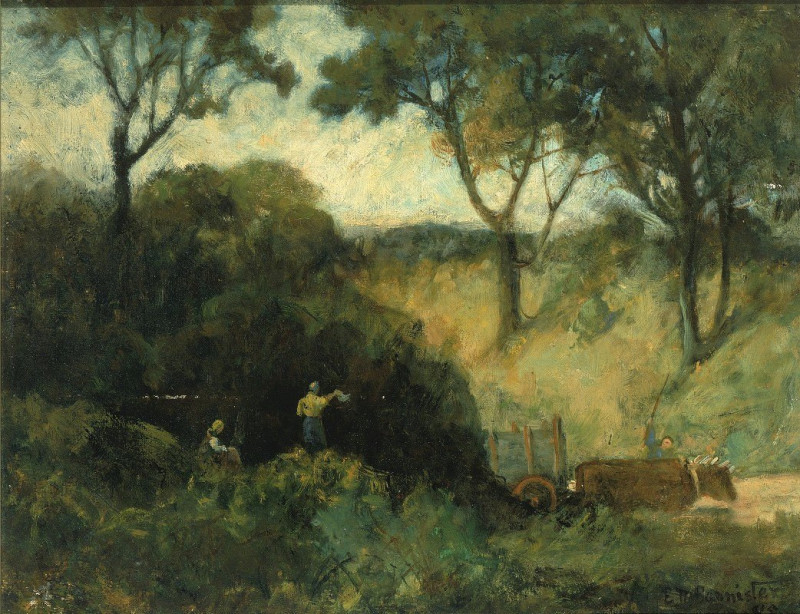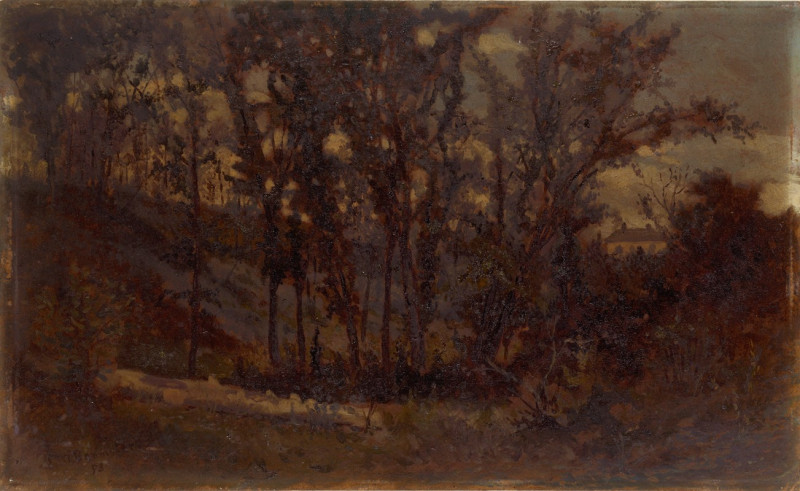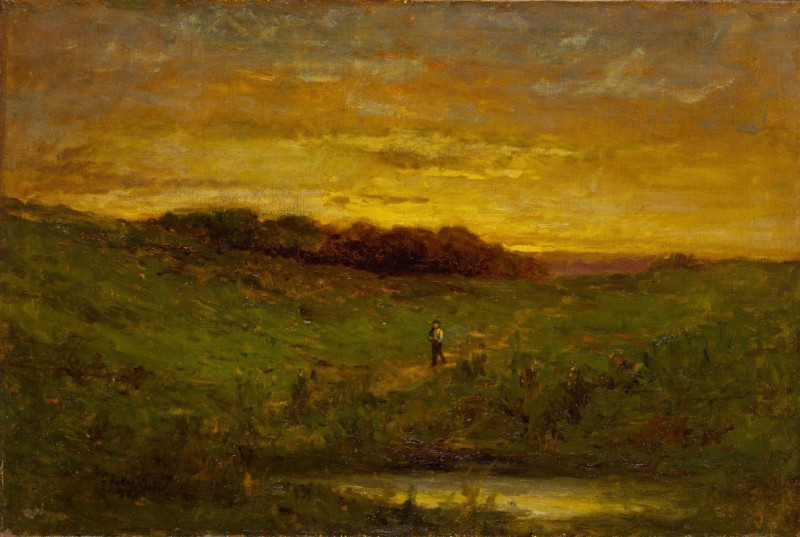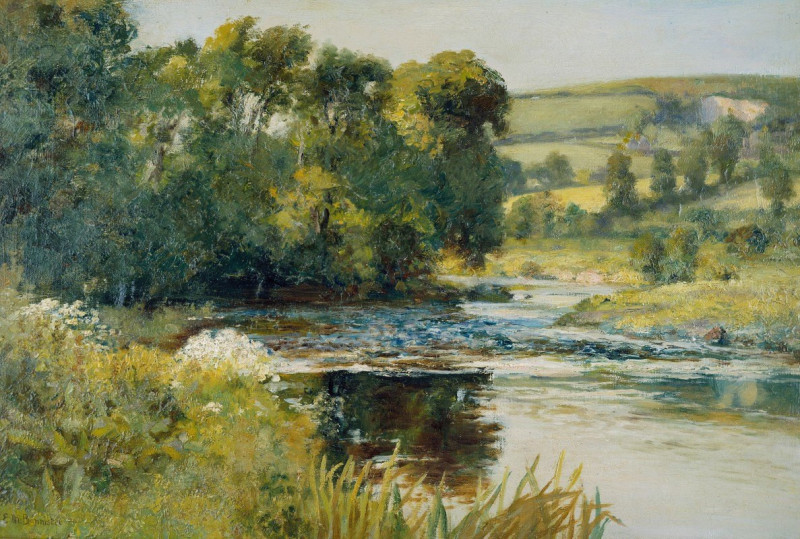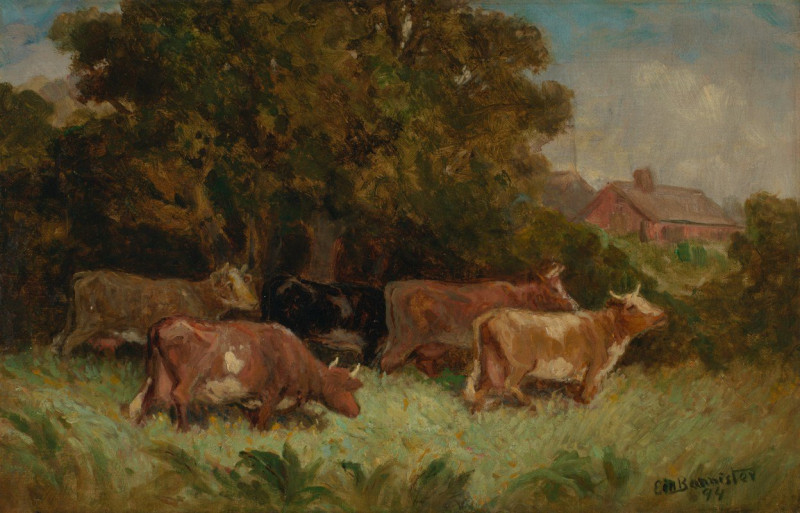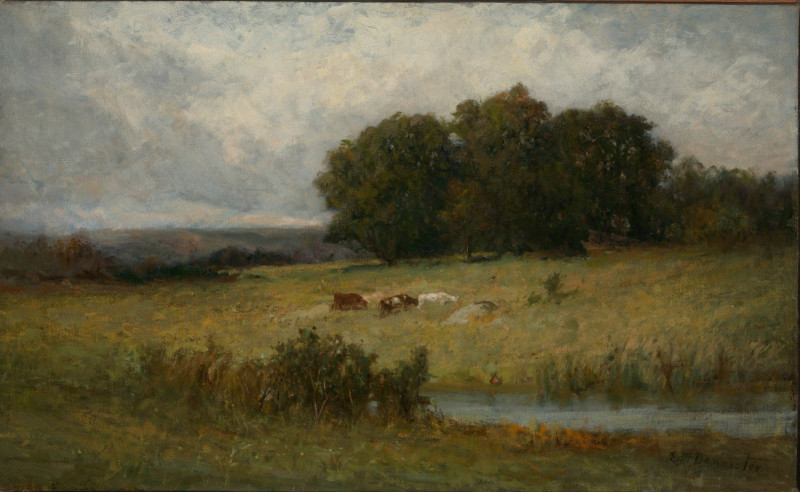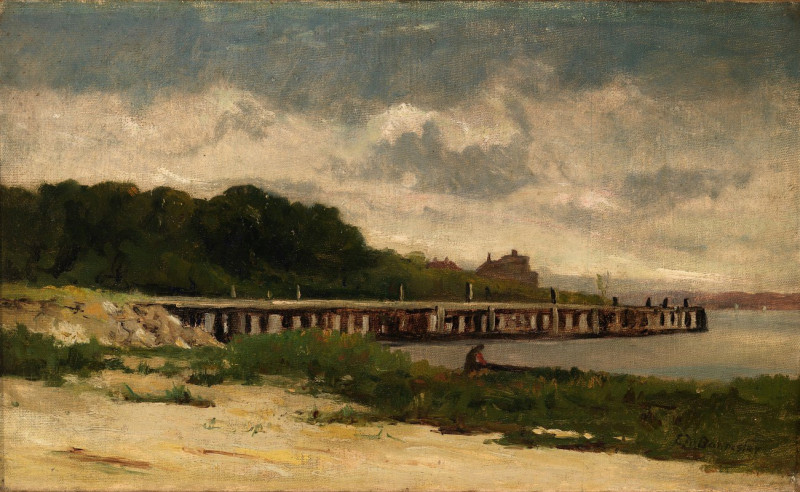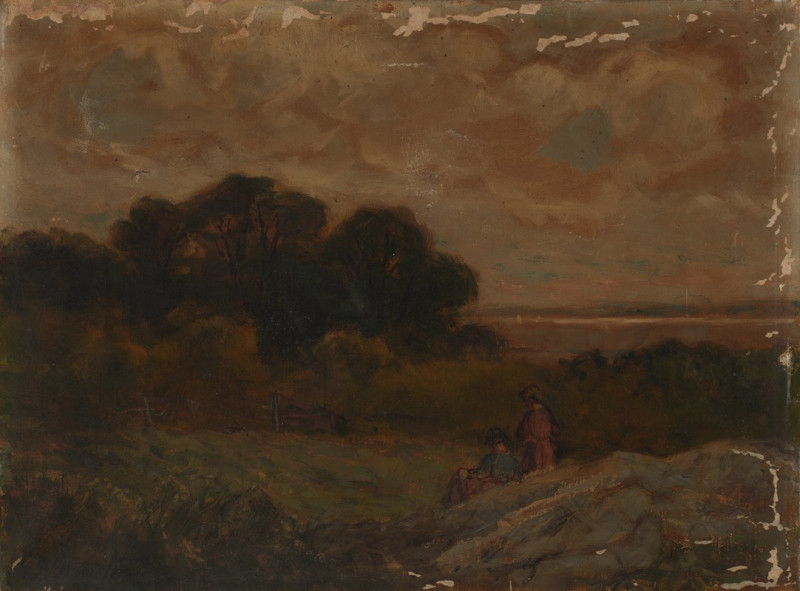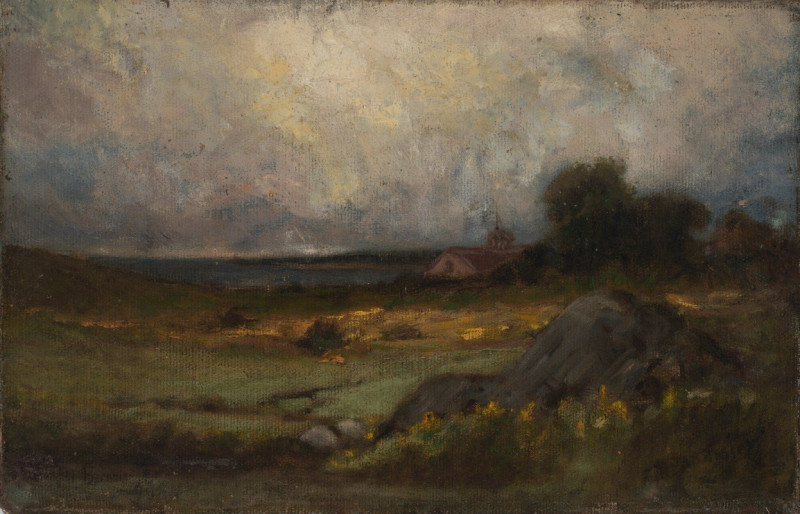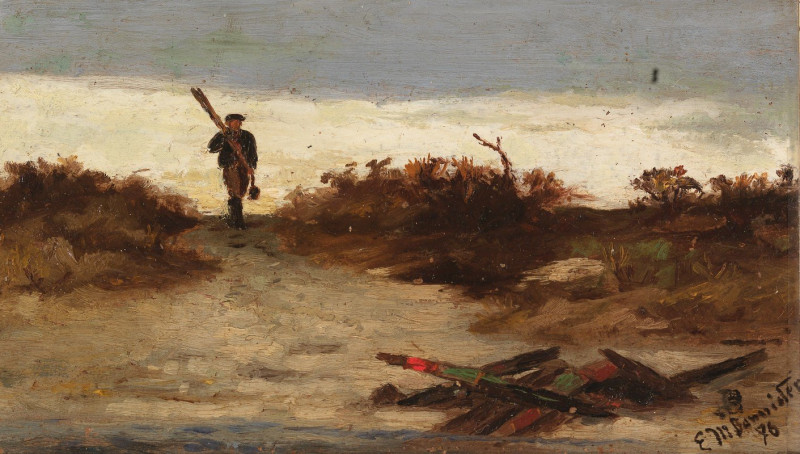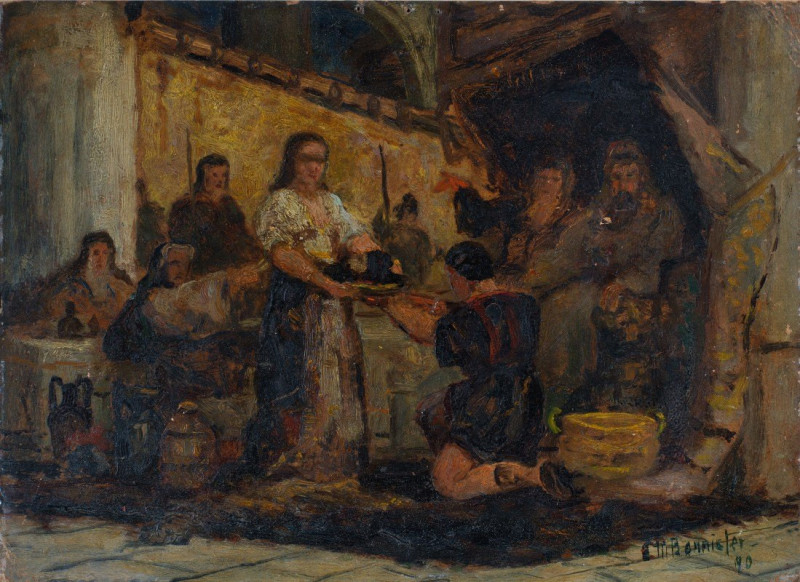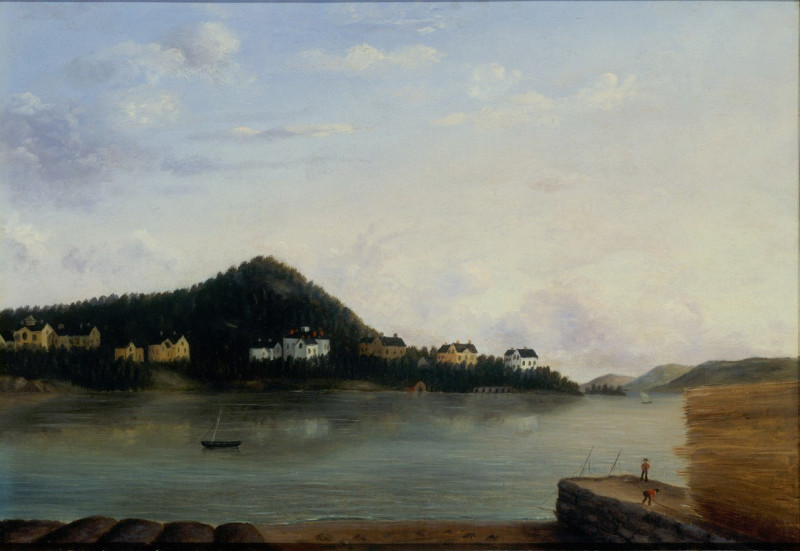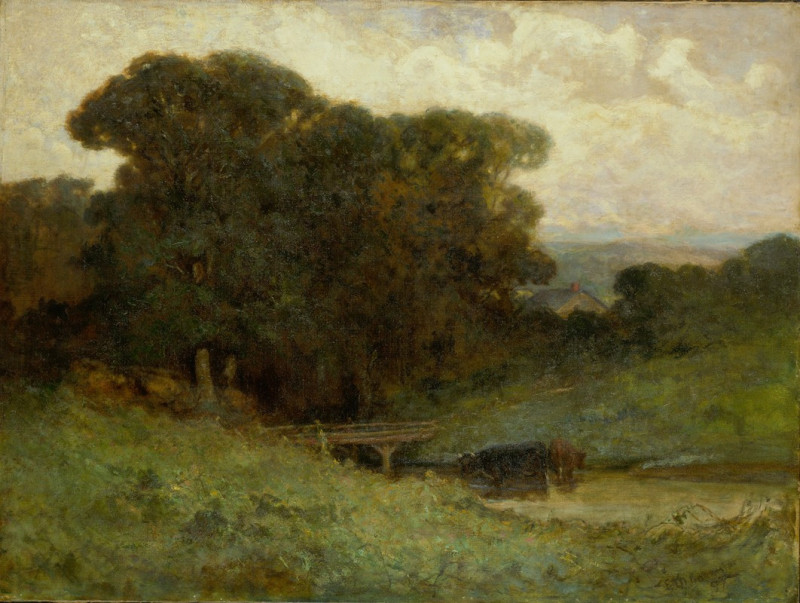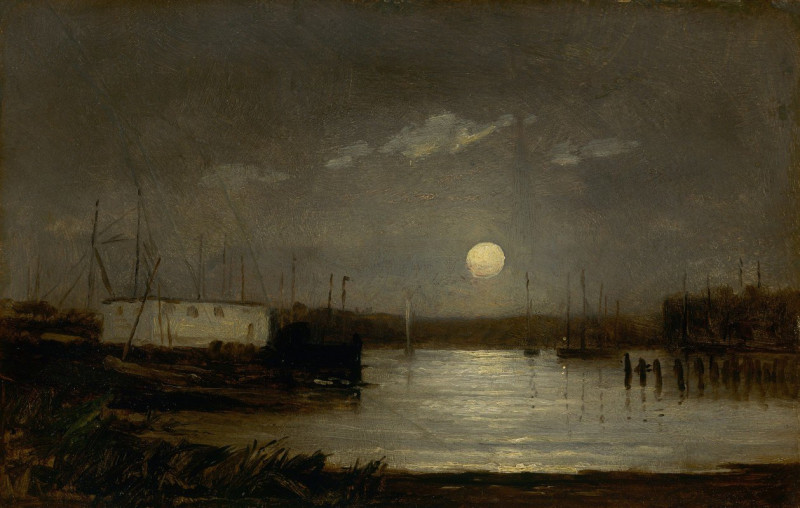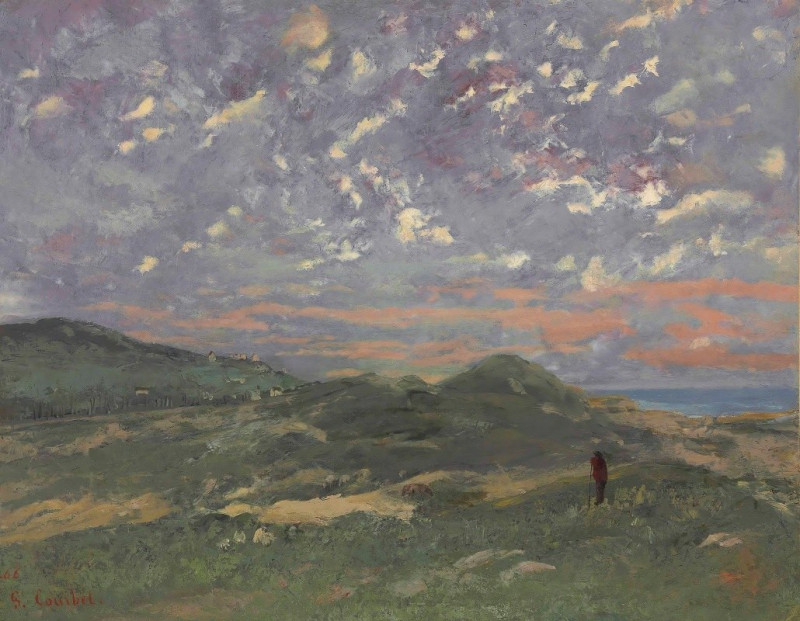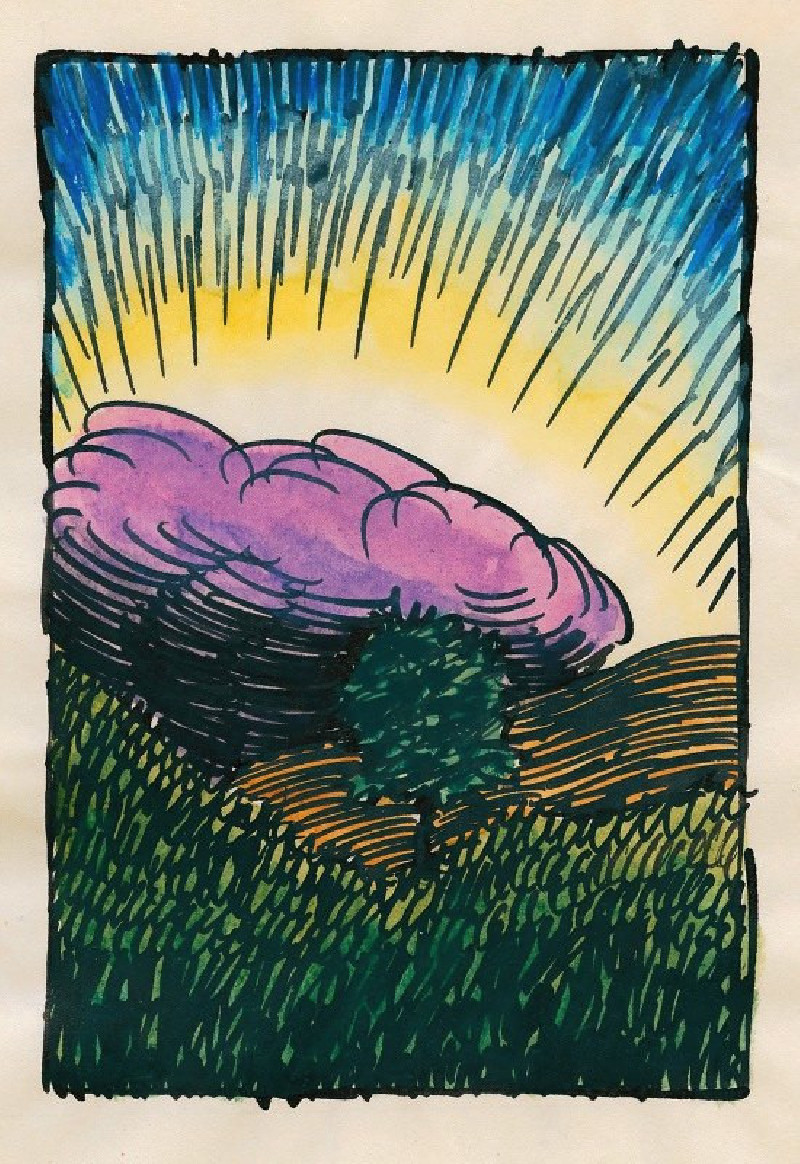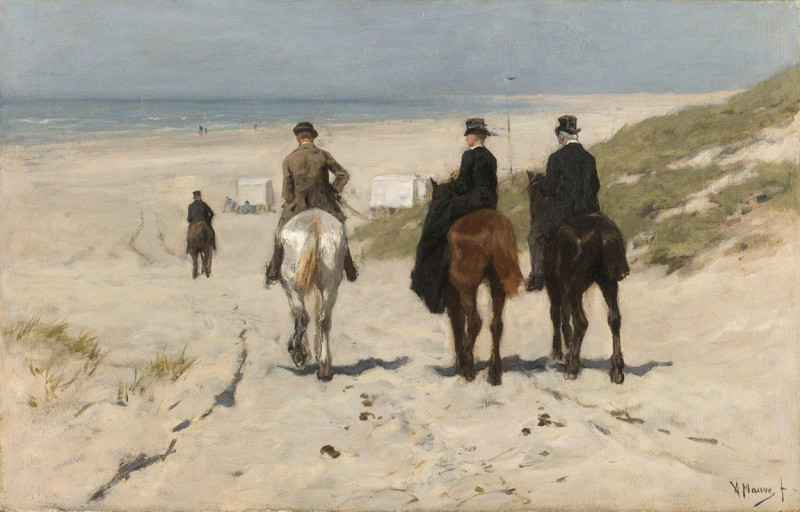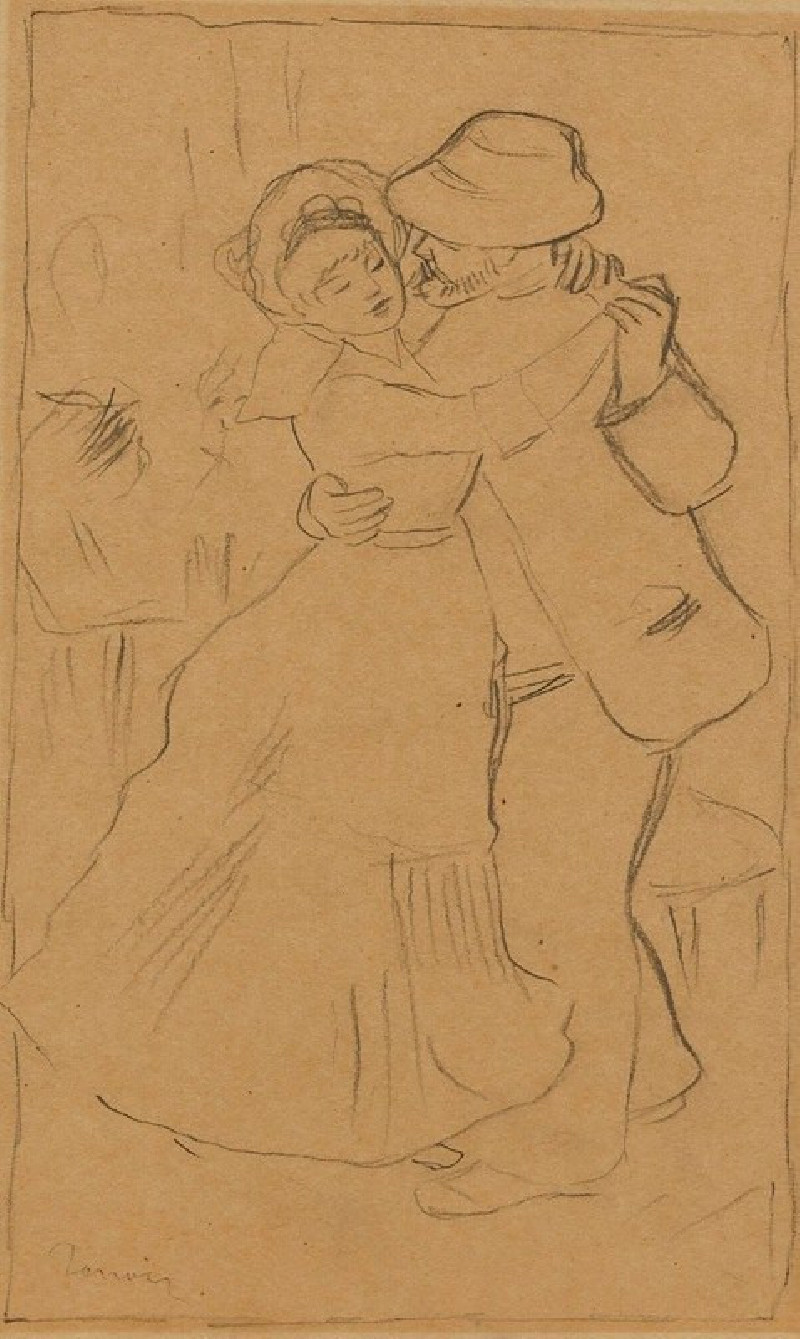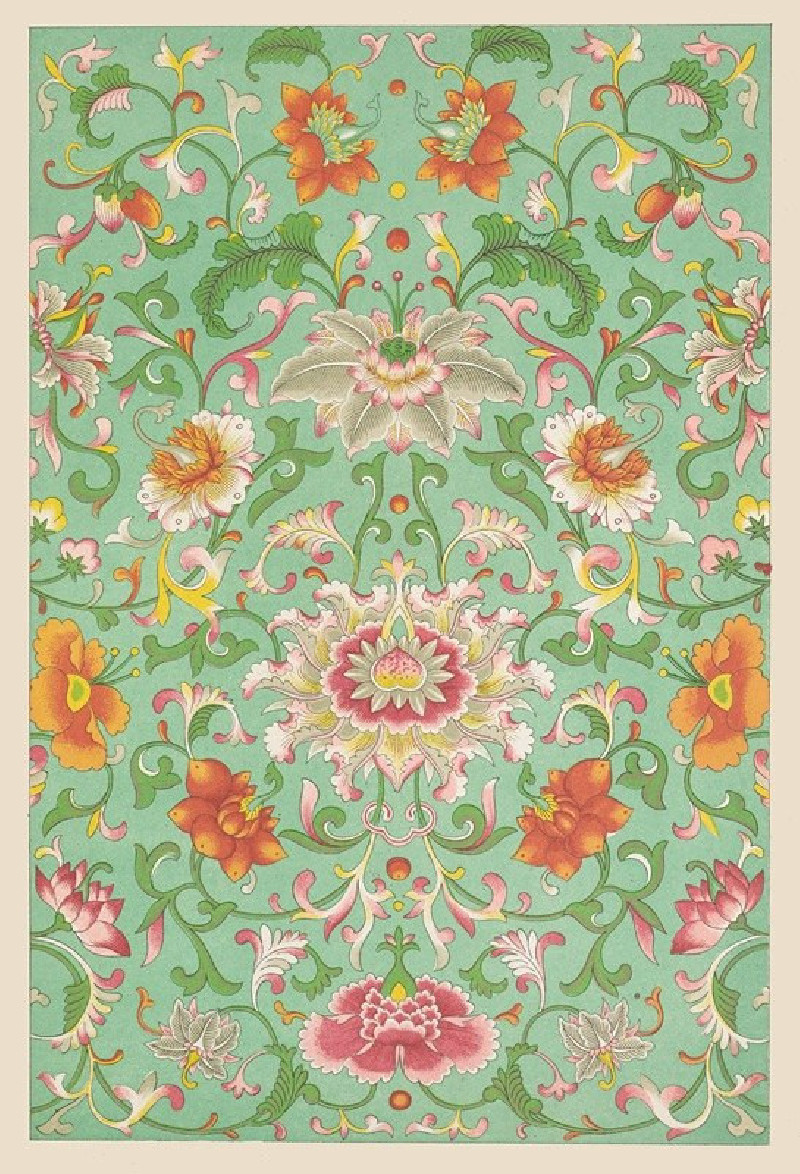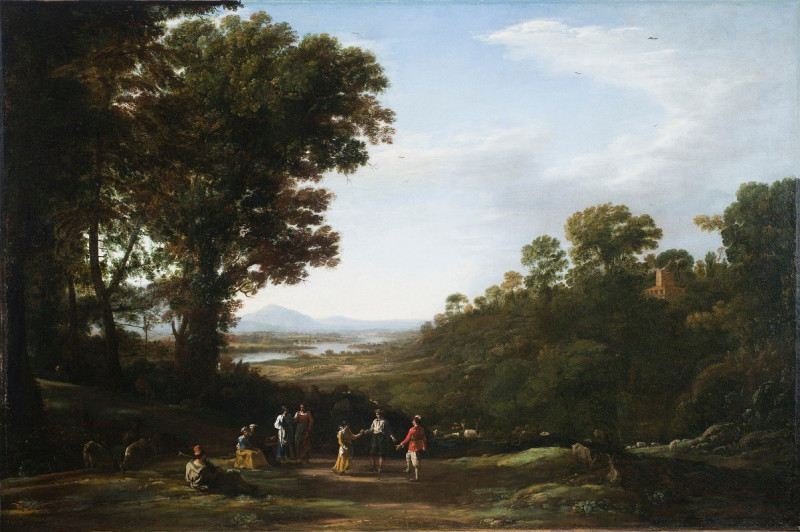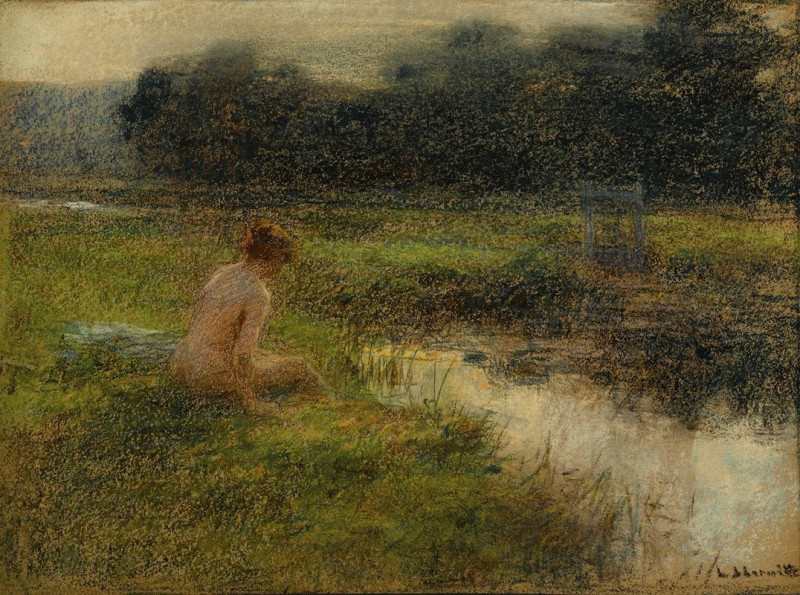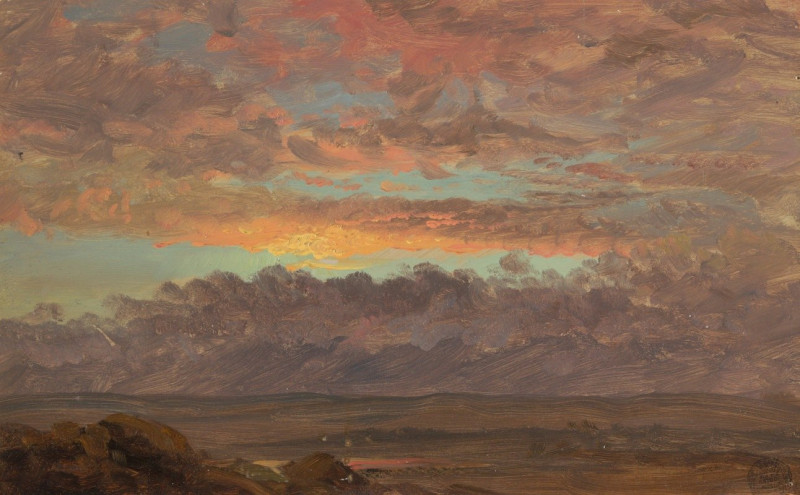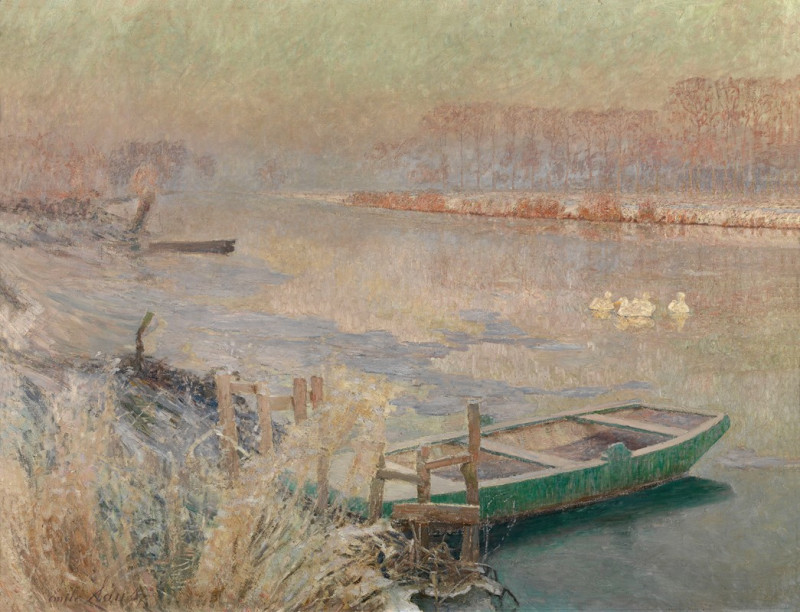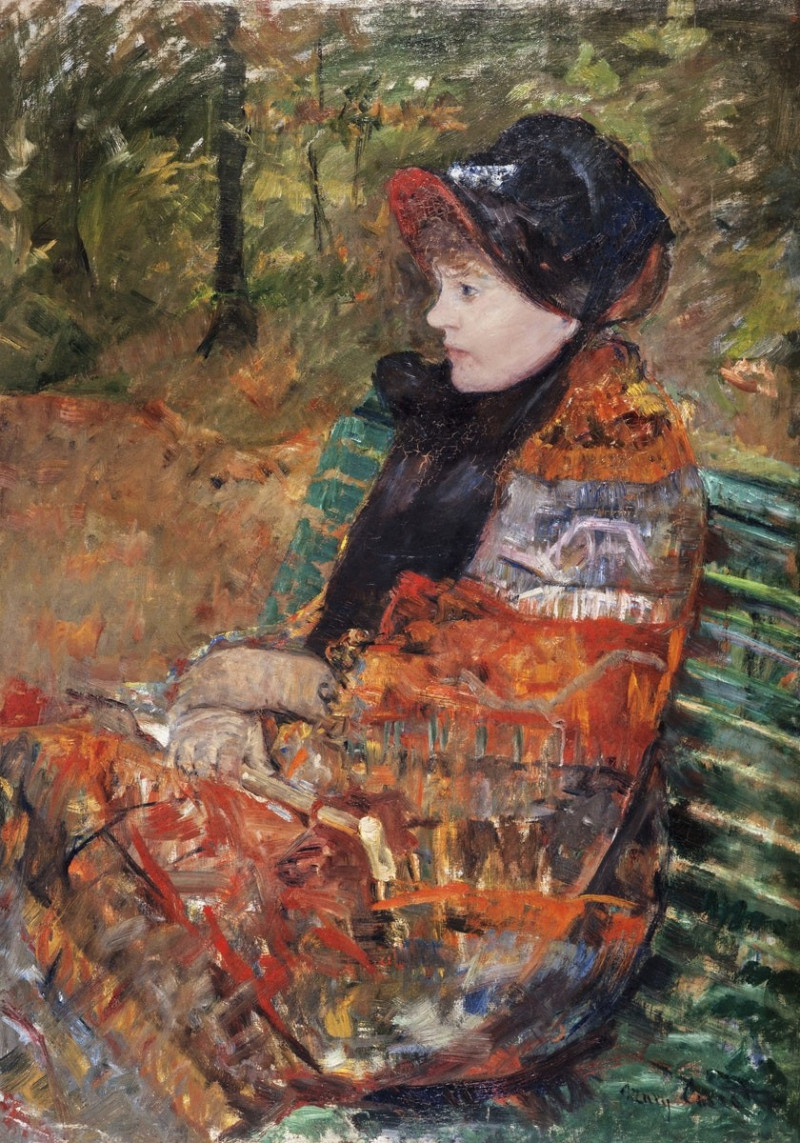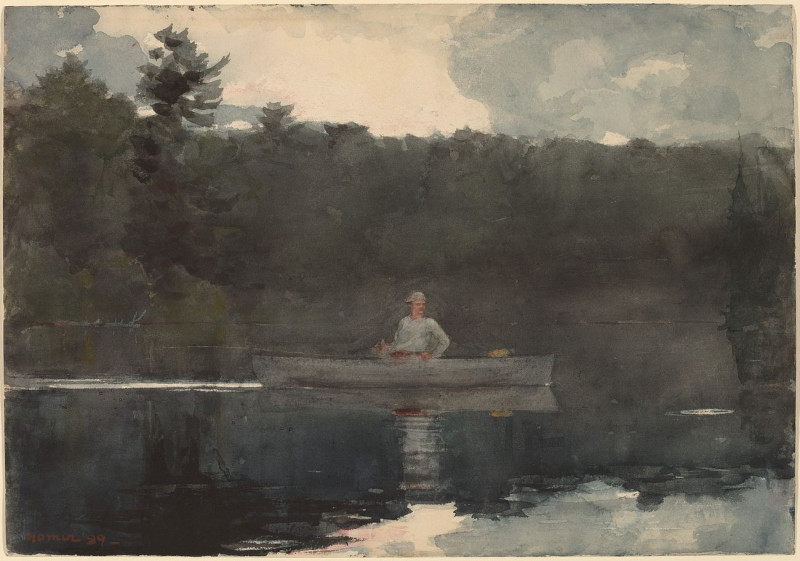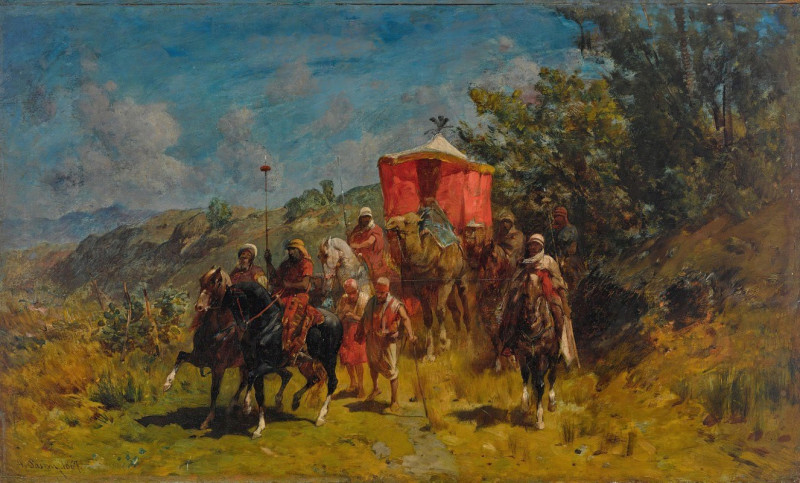Untitled (houses and trees) (1898)
Technique: Giclée quality print
Recommended by our customers
More about this artwork
"Untitled (houses and trees)" is a captivating landscape oil painting by Edward Mitchell Bannister, an influential artist known for his serene and evocative depictions of the natural world. Painted in 1898, this piece exudes a tranquil, pastoral charm that is characteristic of Bannister’s style, inviting the viewer to take a moment to reflect and admire the beauty of rural life.The composition of "Untitled (houses and trees)" is rich in texture and color, depicting a lush, verdant foreground that slowly recedes to reveal the gently undulating hills in the distance. The focal point of the painting is a pair of houses nestled amidst dense foliage. The house to the left, with its prominent white walls and blue-gray roof, contrasts with the softer, earthier tones of the smaller red-roofed structure to the right, adding depth and interest to the scene.Large, billowing clouds dominate the expansive sky, suggesting the transient light of either early morning or late afternoon. These clouds are masterfully rendered with dynamic strokes of white and gray, reflecting the ever-changing weather patterns typical of the northeastern United States landscape.Bannister’s attention to the subtleties of natural light and his adept use of color gradients enhance the painting's overall mood, making "Untitled (houses and trees)" not just a mere representation of a rural scene, but a reflection on the tranquility and fleeting beauty of everyday surroundings.
Delivery
Returns
Edward Mitchell Bannister (November 2, 1828 – January 9, 1901) was an oil painter of the American Barbizon school. Born in Canada, he spent his adult life in New England in the United States. There, along with his wife Christiana Carteaux Bannister, he was a prominent member of African-American cultural and political communities, such as the Boston abolition movement. Bannister received national recognition after he won a first prize in painting at the 1876 Philadelphia Centennial Exhibition. He was also a founding member of the Providence Art Club and the Rhode Island School of Design.

